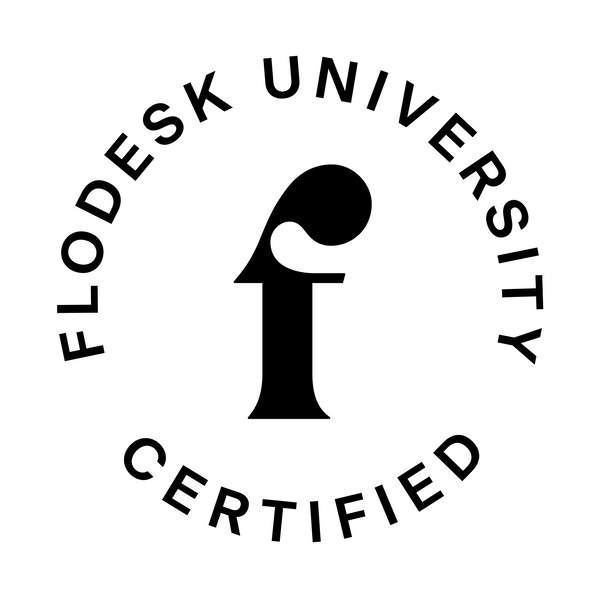*What is branding? Today we have Latesha Lynch, the Business Branding Academy owner, and our resident branding and premium pricing expert, simplifying the process when considering your branding strategy.
Here's what Latesha teaches:*
Before I dive into explaining to you the three-part formula for understanding what is branding and attracting your ideal clients, first, I want to make sure that we're all on the same page and we have the same foundation. What are the differences between the words brand, branding, and brand identity?
First, your brand is how people perceive your business. It's the assumptions that they make about what you do, who you help, how much value your products or your services hold, and how much they're willing to pay for it because of that perception.
Second, we have branding. These are all the activities that you're doing to help shape the perception of your brand. These are the things you're posting on social media, the website you've created, and how you're interacting with people there, the press releases you're putting out. If you have influencers that you want to promote your products, these are all the branding activities you've done to help shape the perception and value of your brand.
Then lastly, let's talk about brand identity. These are all the visual, audible, all the things that attract and hit the senses. Like your logos, the color palette, your font, the song that you play at the beginning of your podcast, the smell of the food when people walk into your restaurant, the smell of the hotels when you walk in the lobby, these are all brand identity pieces.
Now that you know the foundation of what these things are let's talk about what I call the science of branding. There is a science to attracting your ideal clients, and there's a three-part formula for that. The science of branding is the perfect combination of your brand having a solid reputation and creating memorable experiences that lead to people being more aware of the problems you solve and who you solve them for.
That is the science of branding so let's talk about the three-part formula for that. Your goal with branding activities is to create and try to help shape your brand's perception to attract customers. Think about this as a three-part Venn diagram, and in the very center is your customer.
CIRCLE 1: FIRST IMPRESSIONS
The top part of that Venn diagram is your reputation. The way to help shape that reputation and how that helps people perceive your brand is based on first impressions. Let's think about where they're getting first impressions, which are coming from three places.
First, your customer service activities. If you're brick and mortar and they're walking in your store, how do you greet them? How do you treat them? If you have a customer service line, how are you talking to them on the phone? Are you answering their questions? How are you engaging when your clients reach out with a problem or ask you a question? If they ever get on the phone with you or become a customer, how are you treating them? These are all customer service practices.
The second place is through social media. When they leave you a long, thoughtful comment on your post, do you respond with an equally thoughtful comment, or are you just leaving them an emoji? If they DM you, are you responding? These things really help shape your reputation.
And lastly, let's talk about your website. All the people who go to your website are going to have a first impression immediately. Is it hard to use? Is it easy to navigate? They didn't know that you offered all these things. It's beautiful, it's working nicely, the design is fantastic. All these things help shape that reputation. Your reputation is cupped by your brand and your brand identity.
CIRCLE 2: MEMORY
So now we talked about reputation, the next circle is memory. Your brand identity pieces help contribute to people remembering your business.
The starting point of everyone's memory are your senses. How did the restaurant smell when I walked in? What were the sounds that I heard at the botanical garden? What logo did that company have? What colors were they using on their Instagram feed? All these things start and kick off the memory for your potential customers.
For them to remember you and keep that, the next step of the memory, which is a science, I didn't make this up, is for them to store that into short-term or long-term memory. Whether or not it gets short-term or long-term is determined by how much of an impression you made. Is it like, what did I wear three days ago? I don't remember. Or is it, oh my gosh, this person answered this question? I never thought about things that way. Now I will never think about that thing the same way again. That is a memory that's going to be stored for the long term.
And then lastly, they must recall your business. All those things you were doing led to the fact that if they needed something that you offer, will they remember you later? These things are shaped by your brand identity pieces and all your branding activities that you're doing.
CIRCLE 3: AWARENESS
And then that last circle of the triple Venn diagram is your awareness that you've created for your business. You are doing all these branding activities; they already have a perception of your business because of how you were treating them online and others online. You created this memorable experience, and now it's like, are they aware of the problems you solve, and who you solve them for? Are they aware of the products you offer, and who is best served by using those products?
If you've done branding the right way, they will remember that, and when it comes time to make this buying decision in the awareness stage, are they aware that they need to go with you and your business? Hopefully, they are because if they are, they become a customer.
So today, I shared with you the three-part formula of what is branding. Branding is your reputation, the memories you create, the awareness you've built around your business, the problems you solve, and who you solve them for. I hope this training you've found very valuable, and I'll see you next time!
What to Watch Next
The 5 Steps of Successful (and Tactful) Crisis Communications
5 High-Converting Places on Your Website to Add Your Opt-in Email Form










